We've all been utterly enthralled by long hair at one point or another. Hair extensions can now make your goal of waking up with long locks a reality, regardless of your present hair length.
Perhaps you've recently chopped your hair short but discovered a stunning long hairdo that you'd like to show off. Maybe you're having problems with hair development, and your hair won't grow past a particular point. Hair extensions are a wonderful accessory that gives you long locks for as long as you keep them on. Hair extensions are commonly used in the following ways:
- Hair Extensions (Fusion or Bonded) (like Great Lengths). Heat is used to attach individual keratin-tipped strands to your natural hair.
- Hair Extensions with Tape-Ins (like HotHeads). Double-sided tape is used to adhere hair wefts to small pieces of your natural hair.
- Hair Extensions that are woven in (or sewn in). Wefts of hair are threaded (with thread) onto the braids, and your natural hair is braided in rows from ear to ear.
But first, let's go through the fundamentals. What are hair extensions, how do you use them, and what should you think about while purchasing them? Continue reading to learn more about this and other topics.
Why Use Straight Bun Hair Extensions

Hair integrations are another term for hair extensions. They're used to make one's hair look longer and fuller. Natural or synthetic hair can be used to make them. Virgin natural hair extensions are the highest quality (and, of course, the most expensive) since the cuticle of the natural hair is retained, and all of the hair flows in the same direction, giving it the most natural appearance. Synthetic hair extensions are a less expensive option if you're on a budget. Synthetic extensions are suitable for anyone who wants a temporary change in style, albeit they aren't great for heat styling and tangle easily. They also don't require nearly as much upkeep as natural hair extensions do.
Synthetic Hair Extensions
The complexities of handling, styling, and maintaining healthy and growing natural hair can be challenging. Protective styling is supposed to be simple and prevent hair damage and breakage; however, the hair used to produce many of these protective hairstyles can actually harm your hair. Synthetic hair, in particular, which is commonly used to make beautiful braided hairstyles, twists, and many synthetic wigs, has a negative reputation for causing damage to your natural curls and causing scalp irritation.

Aside from the evident but significant variations in price between synthetic and human hair, synthetic hair is becoming increasingly difficult to distinguish from human hair. The controversy has even spawned a feature-length drama on the subject. Is all the hullabaloo justified? There's a lot to understand on this subject, so before you pick a side, let's look at what each side has to offer.
What is Synthetic Hair?
Synthetic hair is exactly what it says on the tin. Man-made fibers such as acrylic or nylon are used to make synthetic hair strands. The fibers are subjected to a variety of chemical procedures to give them a human-like appearance, feel, color, and styling ability. How closely a bundle of synthetic hair resembles actual human hair is determined by the quality of the materials used to make the fibers.
What is The Difference Between Synthetic Hair and Human Hair?
Synthetic hair has come a long way since its inception. So much so that distinguishing between synthetic and human hair might be difficult at first glance. Human hair, unlike synthetic hair, is extracted from actual human heads. Human hair and animal hair (horse or sheep) can sometimes be mixed in a bundle.

Although the two varieties of hair may appear to be extremely similar, there are some visible differences to look for. One is color intensity. Human hair often needs to be custom colored after it is acquired, but synthetic hair comes in a wide range of colors. Both approaches have advantages: Synthetic hair extensions and wigs are almost always ready to use. They come in a variety of textures, hues, and lengths (straight, wavy, and curly). Synthetic hair, in addition to being easy to grab and go, has a stronger ability to maintain a style. The fibers work in a similar way to memory foam, allowing it to return to its original shape far more quickly than a human hair.
The disadvantage is that there is less variety, which means you can't vary the style, curl pattern, or color. It's also worth noting that only a small percentage of synthetic hair can be heat styled. Synthetic hair, on the other hand, is very useful for curly hairstyles that need to stay defined and curled. Because the curl pattern is predetermined, it will bounce back into place as it dries, even if you straighten it out after washing. Human hair wigs, on the other hand, will not work in this situation. They're perfect for folks who want a look that is entirely customizable but demands a lot of styling time. Human hair can be dyed depending on how many highlights and lowlights are applied. It's more in line with the way your own hair behaves. This means you'll have to restyle it every time you wash it, and external and environmental factors like dampness, dry air, and friction from sleeping on it might cause it to go limp, frizz up, or get dry and brittle.

How Can You Tell the Difference Between Synthetic Hair and Human Hair?
As previously said, one of the key differences between synthetic and real hair wigs is the possibility of customizing them with various color processes. Synthetic hair loses some of the sheens that human hair can have without those subtle color changes. Alternatively, depending on the chemicals employed to create the synthetic fibers, it could have the opposite effect and be abnormally gleaming.
Synthetic hair of higher quality can feel as smooth and silky as human hair. When washed and dried, however, it will not react the same way. Human hair will need to be restyled, whereas synthetic hair will restore to its natural shape. Synthetic hair is also less likely to tangle. This is another advantage of the style of memory that is inherent in the way it is formed.
Can You Be Allergic To Synthetic Hair?
Yes, to put it succinctly. A synthetic hair allergy is similar to the synthetic perfumes and preservatives found in cosmetics and some hair-care products. When the hair comes into touch with their skin, they may experience itching, inflammation, and redness. It's crucial to remember that the scalp is an extension of the skin on the rest of your body; therefore, some chemicals may cause it to react similarly.

Chemicals used to give synthetic hair the same sheen, smoothness, and, in some circumstances, the capacity to endure heat, hot water, and styling product ingredients may trigger a negative reaction depending on your skin type. If you're not sure whether a style would irritate synthetic hair, start with a removable wig rather than a sewn-in style. In this manner, you can wear it and easily remove it if the skin where the hair contacts your scalp becomes irritated.
Wash your synthetic hair properly before having it sewed onto your head, or better yet, get it cleaned by your stylist. This is a crucial step in removing any potential allergens or surface chemicals that could trigger a skin reaction once the product is on your head.
How To Care for Synthetic Hair
Synthetic hair wigs and weaves require less upkeep than human hair wigs and weave. You won't have to worry about tangling, dryness, or color loss with synthetic hair. It does, however, not persist as long. Expect to get three to six months out of it if you wear it every day, for example, if it's stitched in or if you have synthetic hair braiding.

Perks of Using Straight Bun Hair Extensions
• User-Friendliness
Let's be honest: we've all been in the situation when you're trying to decide if it's worth it to get up early to put that additional effort into your hair or to sleep in an extra 30 minutes. What's so great about hair extensions? It takes just seconds to clip in, and you have complete control over how you style it. Hair extensions allow you to spend less time attempting to look nice.
• There has been no damage
Yes, that's correct! Hair extensions are one of the greatest hair extension options since they do no damage to your hair, unlike other hair extension options like tape-ins and bonding, which can hinder hair development and create damage.
What Are the Different Types of Straight Bun Hair Extensions?

CLIP-IN EXTENSIONS
The Rundown
If you don't have a lot of patience, clip-in extensions are a great option to add length to your hair quickly. Alternatively, if your hair is fine or thinning, you can add a few strands to add volume. Most stylists will just snap in a couple of pieces if you're only adding a few. You'll almost certainly have to pay for a haircut if you want a completely new shape that requires ten pieces. It's wise to schedule a consultation ahead of time, so you know what to anticipate. You might be able to bring a bundle of hair to your stylist and have your extensions custom-made if he or she is an expert at clip-ins. Virgin human hair (i.e., hair that hasn't been colored, relaxed, or chemically altered in any manner) is preferred over any other type of synthetic hair, according to stylists. Also, make sure you get high-quality clips. Cheap clips aren't very good at snapping. Before you buy the clips, test them out at the beauty supply store to make sure they close securely.
Considering the fact that clip-ins aren't designed to be worn every day, they just need to be washed once in a while. Also, don't even consider sleeping in them. The clip-ins are placed in identical places in your hair. Because the clips create strain, you shouldn't use them more than twice a week because the area can grow weak over time. Unsnap the clips and carefully slip them out of your hair to remove them.

Expert tip: Store your clip-ins in separate plastic bags and name their front, middle, nape, and top to keep track of which piece goes where. When you're ready to use them again, that extra step will make reinstalling them easier.
TAPE-IN EXTENSIONS
The lowdown: Tape-in extensions may be your best bet if you want longer-lasting length. Tape-ins are built with sticky panels at the top of each piece, as the name implies (think double-sided tape). Working section by piece, your stylist takes a strand of hair and puts one panel on top of it and one underneath it, producing a "sandwich" with your hair sandwiched between two extensions. One entire head takes roughly an hour to complete.
Basic care: Use your regular products to wash and condition your hair. Use your hands to blow-dry your hair until it's around 75 percent dry. Start by drying the extension pieces individually with a round brush, without your own hair in the area." Be prepared to return to your pro when you're ready to take them out. It's the most crucial stage, and you must be careful not to pull your own hair out.
Expert tip: Apply olive oil to the sliding extension and massage it before your removal appointment if it starts to come loose. Peel the panels apart gently and comb off the adhesive.

SEW-IN WEAVE
The lowdown: A sew-in weave allows you to modify your hair length, volume, color, and texture with no maintenance. How it works is as follows: Before sewing wefts of hair or "tracks" onto the braids, your stylist creates flat cornrows all over your head and strengthens them with thread. To provide you the option of wearing your hair up, a layer of your own hair is normally left out around the front, sides, and back. A sew-in weave is suitable for any hair texture and is cost-effective. The process takes two to five hours, but you can leave your weave in for up to 12 weeks, which is why it's so popular among ladies who want to let their hair grow out or take a break from heat styling. Stick to high-quality human hair, just like with extensions.
Pre-weave your hair, clip your ends, and apply a deep conditioning treatment. Stick to your usual washing and conditioning procedure once you've received the weave. Because you won't be able to massage your scalp fully while wearing the weave, expect some accumulation when you remove it. Styling should be simple, but products should be used sparingly. Also, don't neglect your hair. When shampooing, make sure to hydrate any hair that has been left out. Your edges will break if you don't take care of them. Also, don't go overboard with heated styling tools. Allow a professional hairdresser or a knowledgeable friend to assist you in removing your weave. Allow two months before re-weaving your hair to guarantee that it remains healthy.
Expert tip: You don't have to give up your textured style to get a weave if you have super-curly hair or an Afro. Wefts ranging from coily to kinky are sold by companies like juvabun to blend with and improve natural hair. The tracks are inserted in the same way that traditional sew-in weaves are: with needle and thread. It's also wonderful for women moving from relaxed to natural hair since it allows them to practice styling hair that matches its natural texture while also allowing them to experiment with different lengths and styles.

Synthetic Wigs
Here's How It Works
Zendaya and Katy Perry, two hair chameleons, know the value of a good wig: From one day to the next, you might change your persona. Wig prices vary widely depending on the type of hair, length, and texture no matter where you shop, but juvabun has the greatest. Lace wigs are one of the most popular styles. They provide you with a really natural hairline. Hair appears to be coming out of your scalp, and you can part it in various directions.
Basic care: The frequency with which you wash a human hair wig is determined by how frequently you wear it; once every 10 days is a decent rule of thumb. Use a hydrating, drugstore shampoo and conditioner with warm water instead of your expensive items. Use as little product as feasible between washes. It leaves a residue on the hair and might cause it to become heavy and matted. A synthetic wig does not need to be washed. Simply toss it away if it gets unwearable. If you do decide to wash it, make sure to use lukewarm water to avoid melting the fibers.
Expert tip: If you don't have oil to remove your lace wig, try a heavy conditioner instead. Also, before purchasing a wig, make sure you know how much it weighs.

How to Pick The Best Straight Bun Hair Extensions for Yourself
Finding The Match
The best extension method will be determined by your budget, preferences, and hair type. While juva buns and tape-in extensions can be used on almost any hair texture, weaves are excellent for curly, kinky hair. African-American hair is perfect for weaving extensions because it has enough strength and structure to hold the cornrow braid. Juva bun extensions are the most expensive ($500 to $4,000) and take the longest to apply (up to three hours); nevertheless, they last the longest (three to four months). The tape-in method is faster (approximately an hour) and less expensive ($300 to $2,000), but it requires more frequent maintenance (every six to eight weeks). The tape-in extensions, on the other hand, can be removed and reapplied. You don't need to get new hair every time. Weave-in extensions, which last about three months, can be administered in an hour or two, and are the least expensive choice ($100 to $1,000), are the same.
How Long Do Extensions Last?
The first question you may have when investing in something is, "How long will this last?" —whether it's hair extensions, shellac manicures, or even something as simple as a container of your favorite night cream, and for a good reason. When you spend your hard-earned money on a product, it's crucial to consider how much it costs and how long it will last.

So let's have a look at the many types of hair extensions available and how long each of them will last you.
We're giving you the facts on what these hair extensions are, how long they last, and how you can take care of them, so they last as long as possible to help you educate yourself on the numerous types of hair extensions available.
FUSION/PRE-BONDED HAIR EXTENSIONS (3-4 MONTHS)
Fusion hair extensions, also known as Pre-Bonded hair extensions, are connected to the base of the hair with a tool that looks like a hot glue gun and binds hair to individual strands of natural hair for a fuller, more natural look.
How long do the extensions last before they need to be replaced?
Depending on how carefully you care for your hair extensions, they can last anywhere from 3 to 4 months. Because these extensions are attached at the root of your natural hair, this includes how you wash your hair, how often you style with heating tools, and even how you brush your hair.

What Is My Plan For Taking Care Of Them?
While you don't need to buy any specific shampoos, conditioners, or other hair care products (you may stick to your regular routine), you will need to have these hair extensions repositioned every 2-3 months.
TAPE IN HAIR EXTENSIONS (4-8 WEEKS)
There's no misunderstanding about what tape in extensions are: they're hair extensions that are actually put together on either side of your natural hair utilizing adhesive weft tape. They're popular since they don't require any heat and allow your natural hair to grow out freely.
How long do the extensions last before they need to be replaced?
Tape-in hair extensions can last anywhere from four to eight weeks. You can have the same hair taped back in for a fresher look if you take good care of them.
What Is My Plan For Taking Care Of Them?
When your tape in hair extensions is wet, one of the most important things to remember is to never comb or brush them. Make sure they're completely dry before brushing them through with a hair extension brush. This will prolong their life and make them appear more natural.

CLIP-IN HAIR EXTENSIONS (3-6 MONTHS)
Clip-in hair extensions, in a nutshell, are the least harmful, easiest to use, and least permanent type of hair addition available. These are available in strands with clips connected to the base that are easy to clip into your natural hair.
How long do the extensions last before they need to be replaced?
If you wear your clip-in hair extensions on a regular basis and take good care of them, they can last anywhere from 3-6 months to over a year. However, as with other hair extensions, how well you care for them will determine how long they last.
How Do I Look After Them?
After 30 years, we recommend washing them with sulfate-free, natural products. Before brushing them out, make sure they're completely dry. Failure to do so could result in breakage and damage, leading your extensions to wear out faster.

SEW IN HAIR EXTENSIONS (6-8 WEEKS)
To have your hair extensions sewed in, you'll need to braid your natural hair into cornrows first, then use a needle and thread to sew the extensions onto the braids. Hair extensions are frequently stitched in for people who have thicker hair.
How long do the extensions last before they need to be replaced?
Sew-in hair extensions are semi-permanent, lasting anywhere from 6 to 8 weeks. The maximum duration you should wear a full weave is four months, as it may interfere with the growth of your natural hair.
What Is My Plan For Taking Care Of Them?
It's critical to hydrate your weave's scalp, nape, and edges at least once a week with deep conditioning treatments that assist in moisturizing the hair to keep it appearing natural and healthy.
WIGS (10-12 MONTHS)
These are most likely the type of hair extensions you're most familiar with, and they may have been your first experience with extensions. Wigs are normally held in place by a plastic or net foundation that holds the hair in place and usually covers the full head.

How long do the extensions last before they need to be replaced?
Natural wigs can last up to a year if properly cared for; however, synthetic wigs typically between 4-6 months.
What Is My Plan For Taking Care Of Them?
Heat styling should be avoided as much as possible because it might harm the wig and cause it to wear out faster. In addition, you should avoid brushing your wig when hair is damp and preserve it in a dust-free case to ensure that it lasts a long time.
We hope you've learned everything you need to know about the many types of hair extensions available and how long they'll last for you. Which of these options would you choose?
Where and When to Buy Hair Extensions?
You must get your extensions as soon as possible from juvabun. The JuvaBun hair extension's charm is that it looks and feels completely natural while still looking very lovely. Yes, you will receive compliments from those around you, but that is not our goal. The magic that happens when you start giving yourself compliments is our goal. Our mission is to design goods that will alter your perception of yourself. We want our items to remind you that you are attractive in every way, in every form, and at every age. Because you are absolutely great, and we want you to know it with every fiber of your being.

The Difference a Straight Bun Hair Extension Can Add to Your Hair
Reasons To Go for Hair Extensions
There are a variety of reasons why people choose to get hair extensions.
- Those who don't have a lot of hair growth might use these to add length to their locks.
- It can be used to create a new look, such as a fringe or a specific cut.
- Make your ordinary hair more bouncy
- Add a splash of color to your hair without resorting to chemical dyes.
Things To Keep in Mind Before Getting Hair Extensions
If you want to add a few strands of extra hair to your natural mane, there are a few things to consider before going through the surgery.
- Always get your hair extensions placed in your hair by a skilled hairdresser. Although some of the extensions appear to be simple enough to apply on your own, doing so can cause serious damage to your hair.
- Make sure the extensions you use aren't too tight. If you're in any kind of pain or discomfort, speak with your hairstylist right away to get it fixed.
- Always go for high-quality extensions, even if they're a little more pricey. You don't want to put anything in your hair that could harm it later.
- Don't forget to look after your natural hair. Even if it's only hair extensions, damaged hair can't take much styling. Regularly oil your hair, have frequent treatments and take good care of it.

How to Shampoo Synthetic Hair
You may be able to extend the life of your hair depending on how often you wear it and how well you care for it. Even if you're washing your hair while it's implanted, you can do this. An essential thing you can do to avoid damage or scalp discomfort from synthetic hair is to safeguard your natural hair underneath.
Synthetic hair isn't as airy as real hair, and with your natural hair tucked away beneath it, bacteria and fungi can build, causing irritation and scalp inflammation. These causes might cause hair loss and make your protective style difficult to wear. The risk of damage to natural hair is reduced when synthetic hair is kept clean and clear of product accumulation. With regular cleaning, you may extend the life of your synthetic hair. Follow these measures to shampoo your protective hairdo every two weeks:
- Remove any major knots in the hair with a wide-tooth comb while it's still wet.
- Thoroughly rinse hair with lukewarm water. Avoid rubbing the hair when rinsing since this may cause it to tangle.
- To cleanse the hair, use a sulfate-free shampoo and finger comb it through from roots to ends. Avoid putting too much shampoo near your roots if you have a sewn-in hairdo. It will be difficult to rinse fully, and the mixture sitting on your scalp could cause irritation. Wash Day Delight can also be used to cleanse the scalp. The light consistency and pointed tip reach the scalp quickly and effortlessly, and it rinses clean.
- Thoroughly rinse. Again, limit the handling to a bare minimum to make the ride smooth.

How to Condition Synthetic Hair
Use a leave-in conditioner after you've applied a moisturizing and nourishing conditioner to help smooth and moisturize your hair. The oils in the composition provide a natural-looking gloss to the hair.
How to Detangle Synthetic Hair
While your hair is still wet, treat it with hair milk and detangle it with a wide-tooth comb, starting at the bottom and working your way up to the roots. This approach aids in the prevention of knots. After the hair is knot-free, rinse it thoroughly with lukewarm water to eliminate any remaining product.
How to Dry Synthetic Hair
It's time to dry the hair now that it's been washed and conditioned. Make sure to squeeze the water out of your hair rather than wringing it. Synthetic hair rarely requires styling products because it reverts to its natural state. Unless it's a blow-dryer-friendly variant, it'll have to be air-dried.

What is The Highest Quality of Synthetic Hair?
Kanekalon synthetic hair is of the greatest quality. Heat-resistant Kanekalon hair fibers can be used with curling irons, blow dryers, and hot rollers. This also means you can burn the ends of the hair if you're using it for box braids or knotless braids to keep them intact. Toyokalon is another high-quality synthetic fiber. It looks and feels the most like human hair with a silky texture, and it keeps curls longer than other synthetic hair varieties.
How Do You Keep Synthetic Hair From Frizzing?
Spray on a lightweight detangler and gently comb through using a synthetic hair-friendly brush or comb to keep frizzy synthetic hair at bay. You can use your fingers if you don't have a brush that works with synthetic hair. Use a flat iron on low heat to smooth out frizz and flyaways if the synthetic hair is heat-friendly.
Can You Dye Synthetic Hair?
This is a difficult question to answer. While synthetic hair can be dyed, it requires a specific procedure and synthetic dye type to do so. You won't be able to use drugstore dye to modify the color of your synthetic hair from brown to auburn. If the hair is heat resistant, however, fabric dye and boiling water can be used. Just remember to start with lighter hair because dark hair might be harder to lighten.

Important Do’s and Don'ts of Caring For Synthetic Hair.
- Avoid using hot tools. Using hot tools on synthetic hair might cause damage to the fibers. It's also crucial to keep an eye out for open grills, ovens, and stoves. Choose a heat-friendly choice if you prefer to style synthetic hair with hot tools.
- Use a brush manufactured specifically for synthetic hair. Synthetic hair fibers will not be stretched by brushes designed for synthetic hair. If you don't want a head full of frizz, don't brush it while it's wet.
- Air-dry synthetic hair if possible. Synthetic hair should be air-dried for the finest results. It prolongs the hair's life and keeps it looking healthy.
- Natural hair products should not be used on synthetic hair. Synthetic hair requires very little product, but be sure to pick a synthetic hair-friendly product to avoid product buildup.
- To keep your synthetic hair shiny, use a serum. Apply a dime-sized amount of shine serum to synthetic hair to impart a natural, lightweight gloss.

Key Takeaways!
You might be born with a head full of thick, long strands, or you might not. Regardless of your hair type, the best hair extensions can help you switch up your hairdo in an instant. Plus, the ever-evolving alternatives now include self-applied hair extensions—gone are the days when a major hair makeover necessitated a trip to the salon.
JuvaBun is your one-stop shop for all your hair needs, whether you want sophisticated or basic hair, curly texture or silky-smooth straight hair, long or short hair, open hairstyles, or simple bun extensions, JuvaBun has everything, and in practically any hair color you can imagine. JuvaBun is your one-stop-shop for everything! Because our love for ourselves is growing, it's only natural that we learn to appreciate our hair as it becomes longer. We do, however, have days when our hair isn't quite right. As a result, trust JuvaBun and cherish your curls!

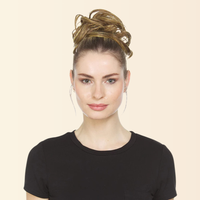
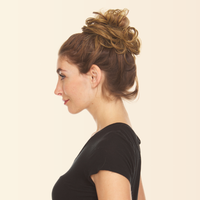
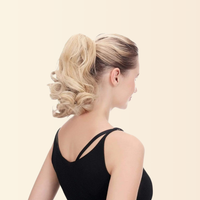
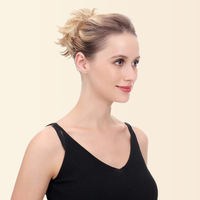

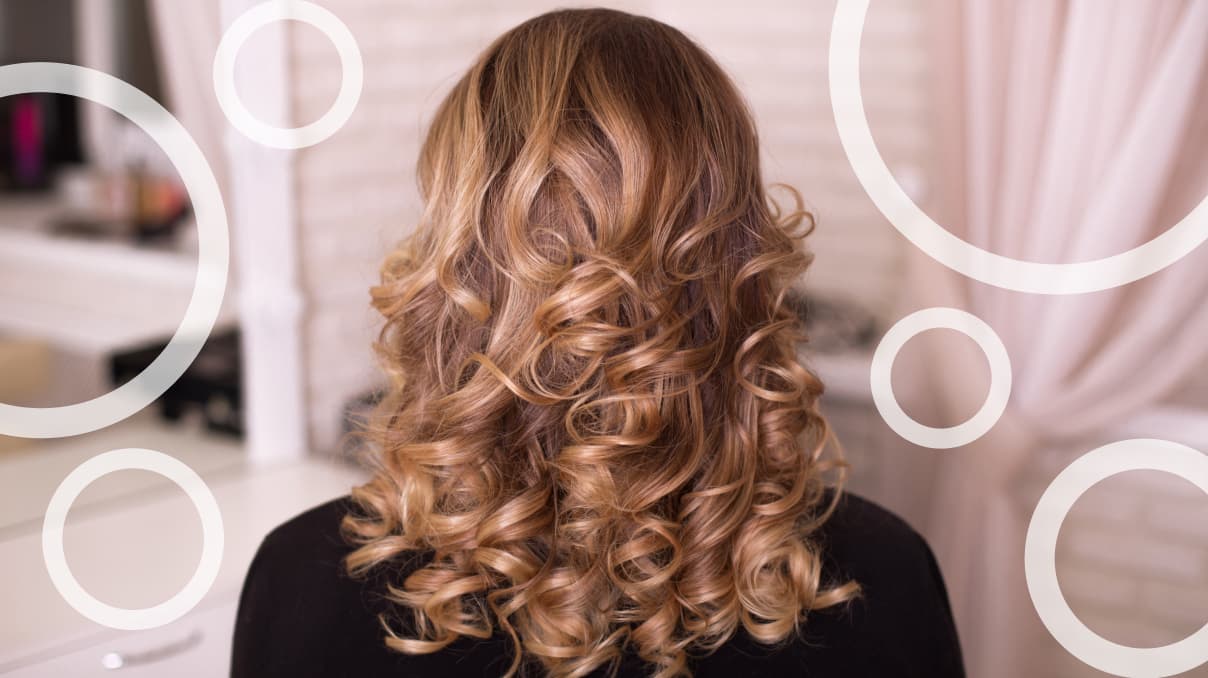
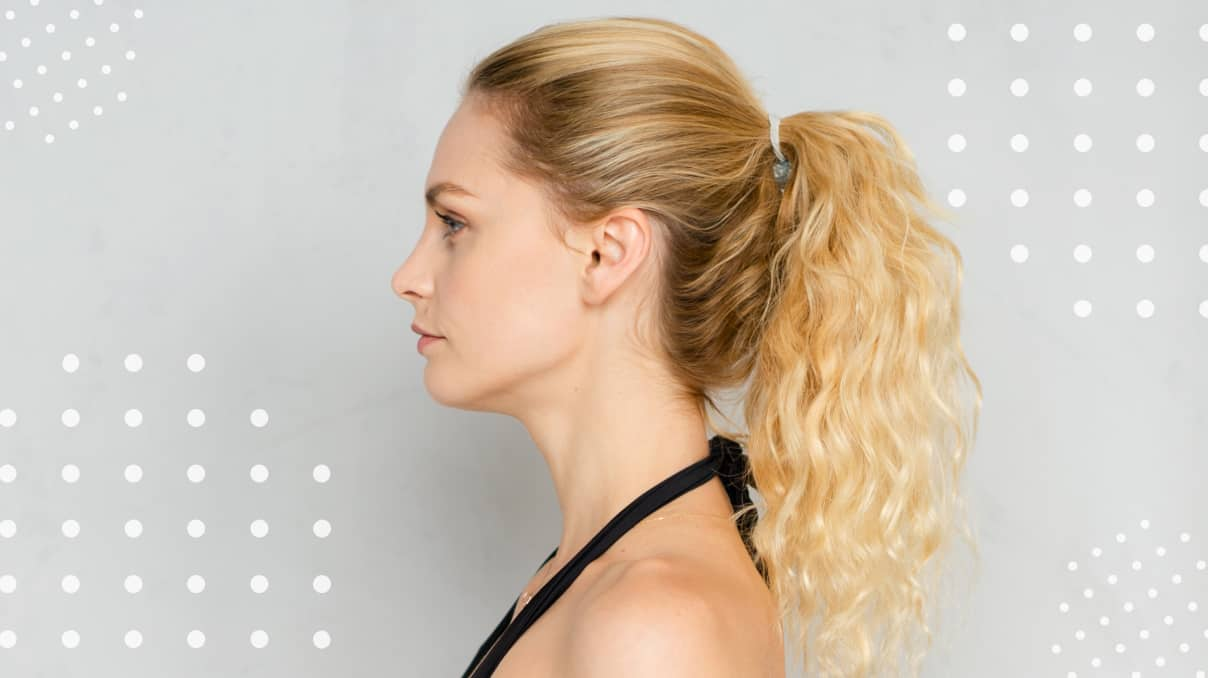
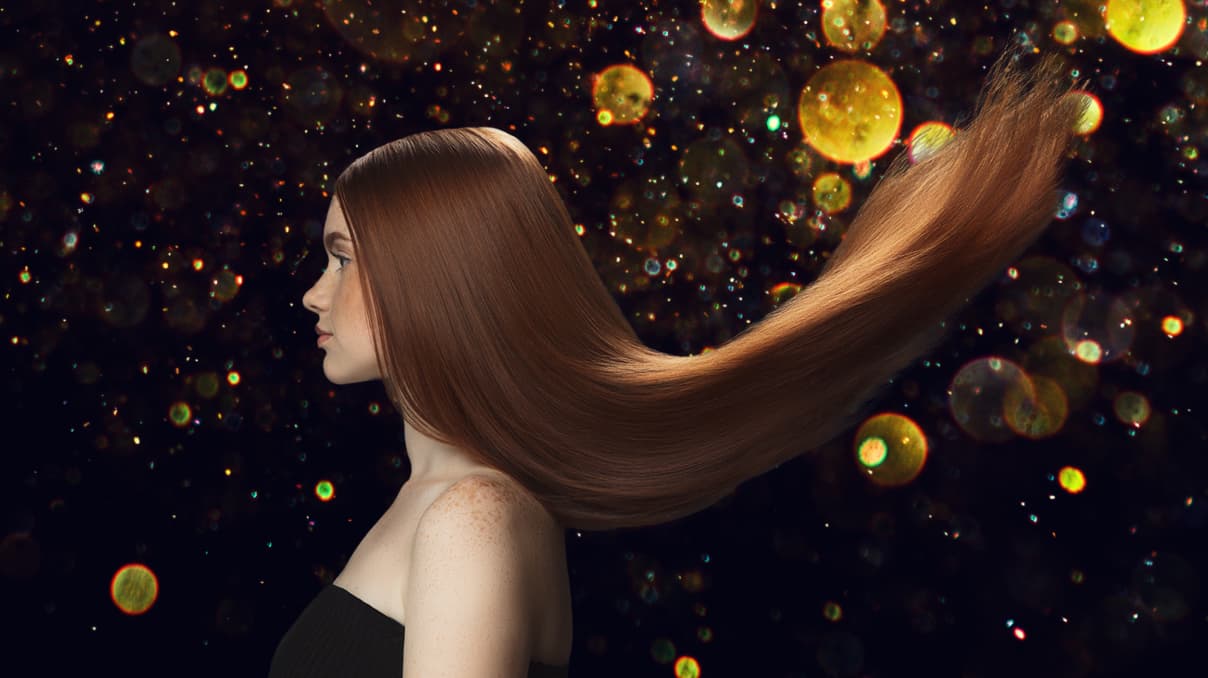
Leave a comment
This site is protected by hCaptcha and the hCaptcha Privacy Policy and Terms of Service apply.